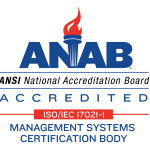Processes
Book boxes
We have been supplying metal deep drawn book boxes to the school furniture industry for over 50 years and currently supply over a dozen school furniture manufacturers. We have tooling for producing industry standard three-sided Open Front boxes and 4-sided Lift Lid boxes that fulfill the rugged demands of our nation’s primary schools. Our boxes can be customized to provide for various tabl;e top and leg mountings.

Prototyping
Stamping
Deep Drawing
Prototyping
A huge challenge to prototyping a deep drawn part is the initial cost of tooling. We work with our customers to develop prototypes using existing tooling and fabrication to approximate the final drawn part configuration.
Stamping
Deep drawn stampings are metal parts that have been formed from sheet metal using metal dies and intense pressure to form sheets of metal into a new shape. Generally, when the depth of a stamped part is equal to, or greater than its half of its diameter, the metal forming process is considered to be deep drawn.
Common everyday examples of deep drawn parts include: aluminum soda can, stainless steel kitchen sink, steel automotive engine oil pan and a breath mint tin!
Deep Drawing
The deep draw process begins with metal blanks. Single blanks are employed to produce parts or products with deeper shapes. Throughout the deep drawing process a metal blank is shaped via pressure applied by a metal die.
Deep Drawing Station Types
The deep draw stamping process may entail smaller individual processes to achieve the final dimensions of a specified part. These may include
- Blanking: Blanking is the process of cutting the initial sheet coil stock into round or shaped flats required for deep drawing. The blanking processes is typically the first station in the press and involves a simple punch and die to cut out an initial metal blank that will then be deep drawn.
- Drawing: Drawing is the process of forming the metal with a punch and die. The final depth and shape may require progressively smaller series of dies that reduce the shape and increase depth and contour of the part.
- Piercing: The process of punching holes in the metal.
- Trimming: Excess metal is cut away to achieve the final dimensions of the finished part.

Characteristics of Deep Drawn Stampings include:
- Wall thickness variation:
- Work hardening:
- Bend Radii
- Part tolerances:
Advantages of Deep Drawing are:
- Economical for high volumes
- High strength and minimal weight
- Creating cylindrical objects and complex geometries possible
- Seamless parts
- Rapid cycle times and reduced lead times
- Controllable quality
Typical metals used in Deep Drawn Stampings
- Aluminum
- Brass
- Bronze
- Cold rolled steel
- Copper
- Iron
- Nickel
- Silver
- Stainless steel

